“Hello. My name is Fred Stein, I’m a photographer, left-wing, and I would like to take your picture.”
This is how Fred Stein used to strike up a conversation with people he hoped to portray. Between 1933 and 1967 he managed to make more than 1,200 portraits this way. The words show he had not only the courage to approach people, but also a talent for quickly putting those who had caught his eye at ease.
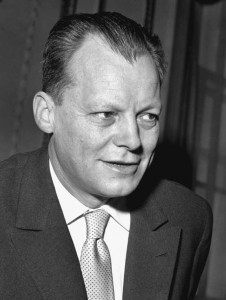
Willy Brandt, New York 1957
© Estate of Fred Stein
Fred Stein took a passionate interest both in those he portrayed and their work. With André Malraux, Arthur Koestler, Egon Erwin Kisch, and countless other peers he discussed the political landscape in Europe of the 1930 and 40s. Willy Brandt and he became firm friends and remained so all their lives long, and likewise others whose portrait he made. In a letter of 10 May 1983, Brandt recalled:
“I met Fred Stein when we were both refugees and fighting the totalitarian Nazi regime with the rather modest means at our disposal. He was a man ahead of his time, an avant-garde and brilliant photographer, inspired by the commitment to justice and concern for truth so clearly reflected in his photographs. → continue reading
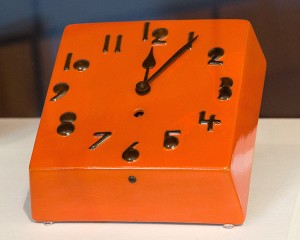
Clock, designed by Greta Heimann-Loebenstein.
Gift from the heirs of Greta Heimann-Loebenstein.
© Jewish Museum Berlin, photo: Nadja Rentzsch
“I chose this clock,” says Leonie* (8 years old) pointing to the showcase. The clock is red and the numbers look a bit strange. She laughs. “A clay clock!” She’s never seen anything like it. The children study the cups, pots, and vases in the big cabinet intently. They gaze, curiously, at the shapes, colors, and designs. They’re supposed to pick the object they like best. Then they’ll learn the name of the ceramicist who made it, its purpose and appearance.
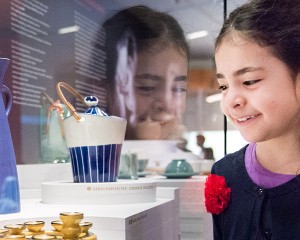
Children’s tour through the cabinet exhibition “Tonalities. Jewish Women Ceramicists from Germany after 1933”
© Jewish Museum Berlin, photo: Nadja Rentzsch
Jona (7) exclaims: “I like this bowl best. Grete made it.” “I think that design is lovely. What would you put in the bowl?” Anna (43) asks him.
Anna is guiding the children from a Berlin elementary school through the cabinet exhibition “Tonalities. Jewish Women Ceramicists from Germany after 1933.” Without hesitating, Jona answers: “Apples or bananas, or even nuts.” “Maybe even pears, or bread!” calls out Elsa (8).
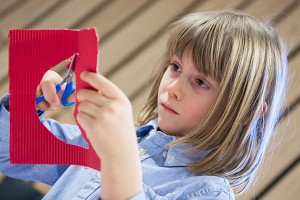
Workshop at the studio in the Academy of the Jewish Museum Berlin
© Jewish Museum Berlin, photo: Nadja Rentzsch
Her favorite object is a candlestick. It’s beige and was made by the ceramicist Hanna. Anna asks the class, “Do you all know what celebration this candlestick would be used for?” Leonie’s hand flies up; she knows the answer: Hanukkah. She has just participated in a candle-dipping workshop for the Jewish Festival of Lights in December.
After the tour, the children start working on their own projects. → continue reading
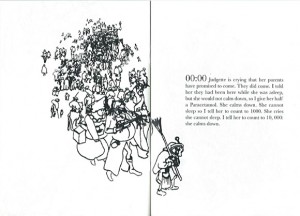
Excerpt from “The Guardian / Sycamore Group”
© Atalya Laufer
One of the works in our art vending machine is a booklet which provides an insight into the inner-workings of many of the Israeli Kibbuzim. With sober drawings and a text that is based on archival documents, artist Atalya Laufer (b. 1979) exposes a particular aspect of growing up on a Kibbutz. As one of the last generation of children to be raised in communal children’s houses (Batei Yeladim), she takes us on a journey through time and into the passing world of the Kibutzim.
The text in the booklet is based on protocols of night shifts that were taken in the early 1970s. In these protocols incidents and particularities in every house, during every night shift, had been recorded. Owing to these we can readily reconstruct the daily life in children’s houses. → continue reading




